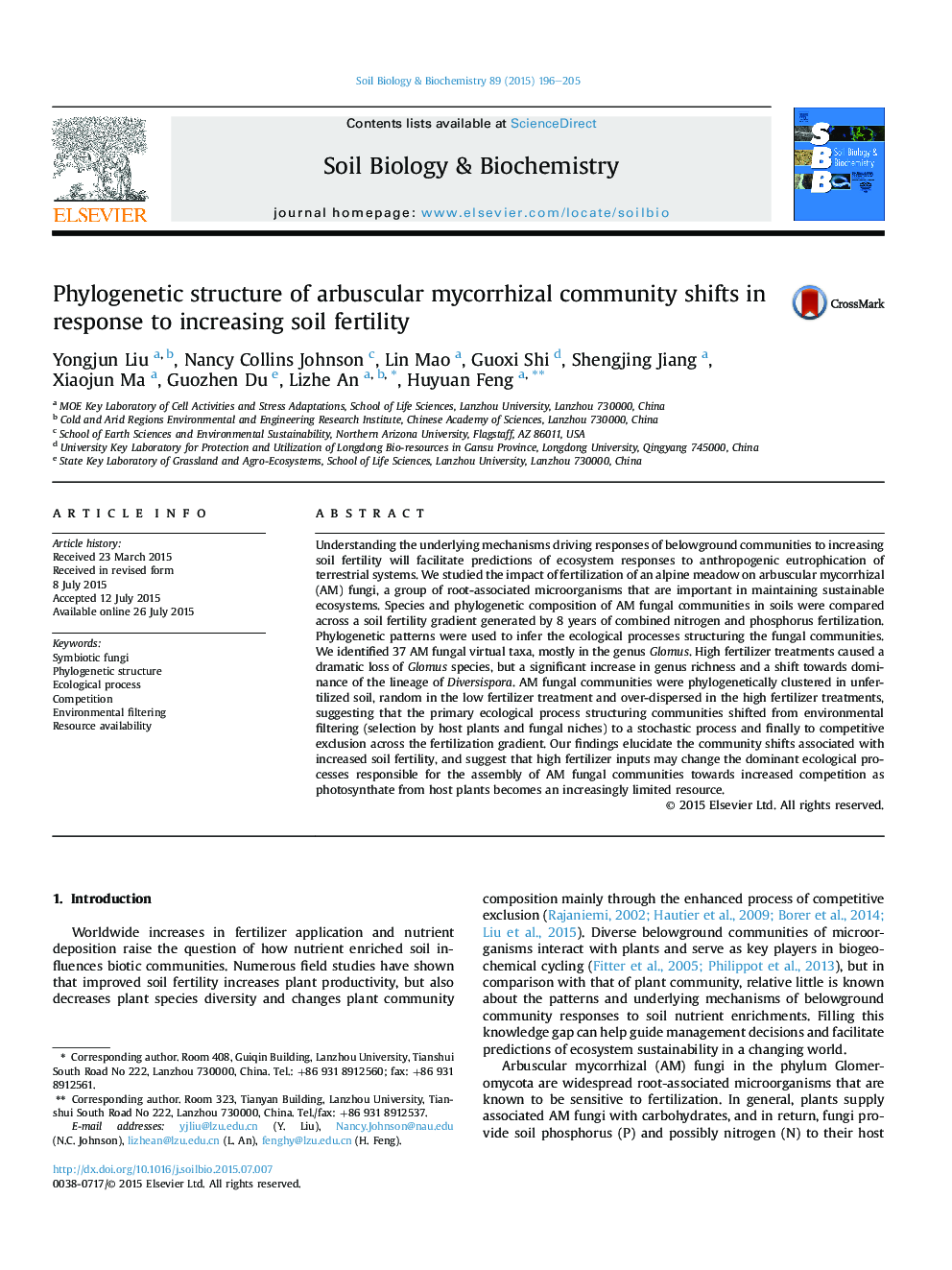| Article ID | Journal | Published Year | Pages | File Type |
|---|---|---|---|---|
| 2024466 | Soil Biology and Biochemistry | 2015 | 10 Pages |
•AM fungal community responses to combined N and P fertilization gradient were studied.•Fertilization reduced virtual taxon richness but increased genus richness of AM fungi.•Fertilization changed community composition and phylogenetic structure of AM fungi.•AM fungal communities were phylogenetically over-dispersed in high fertility soil.•AM fungal responses to fertilization are related to increasing competitive process.
Understanding the underlying mechanisms driving responses of belowground communities to increasing soil fertility will facilitate predictions of ecosystem responses to anthropogenic eutrophication of terrestrial systems. We studied the impact of fertilization of an alpine meadow on arbuscular mycorrhizal (AM) fungi, a group of root-associated microorganisms that are important in maintaining sustainable ecosystems. Species and phylogenetic composition of AM fungal communities in soils were compared across a soil fertility gradient generated by 8 years of combined nitrogen and phosphorus fertilization. Phylogenetic patterns were used to infer the ecological processes structuring the fungal communities. We identified 37 AM fungal virtual taxa, mostly in the genus Glomus. High fertilizer treatments caused a dramatic loss of Glomus species, but a significant increase in genus richness and a shift towards dominance of the lineage of Diversispora. AM fungal communities were phylogenetically clustered in unfertilized soil, random in the low fertilizer treatment and over-dispersed in the high fertilizer treatments, suggesting that the primary ecological process structuring communities shifted from environmental filtering (selection by host plants and fungal niches) to a stochastic process and finally to competitive exclusion across the fertilization gradient. Our findings elucidate the community shifts associated with increased soil fertility, and suggest that high fertilizer inputs may change the dominant ecological processes responsible for the assembly of AM fungal communities towards increased competition as photosynthate from host plants becomes an increasingly limited resource.
